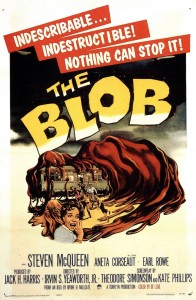Beware of the blob!
May 12, 2016
According to the Ohio EPA, a toxic blob of PCB-laced sediment in Lake Erie is creeping closer and closer to a drinking water supply that’s used by 11 million people. Where’s Steve McQueen when you need him?
While this blob may not be from outer space, its origins are just as creepy: It’s leftover sludge that was dredged from the Cuyahoga River decades ago.
If the river’s name sounds familiar, that’s because it’s credited with helping launch the environmental movement in the 1970s. The river’s pollution levels were so high, toxins on the surface caught fire multiple times from 1868 to 1969.
Luckily, water authorities in Ohio are monitoring things closely to ensure that if blob, which is about 2 miles by 2 miles in size, does reach drinking water intakes, proper treatment procedures can be taken. “The water is safe, we’ve tested the water,” said Scott Moegling, Cleveland Water Quality Manager, in a news report. “I want to get across that even if we were to get material showing up in our raw water, we have more than adequate treatment.”
The river is regularly dredged by The Army Corps of Engineers to ensure it can accommodate ship traffic that serves industry farther up the waterway. The sludge is then dumped into Lake Erie — a move objected to by Ohio officials because of pollution contained in the sludge. The officials are in the middle of a legal battle with the Army Corps to end the practice.
The blob isn’t the first pollution “monster” Lake Erie has faced. Toxic algae blooms caused by fertilizer runoff have plagued the river for years. Both problems underscore the ever-growing importance of protecting source water.